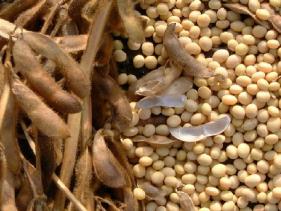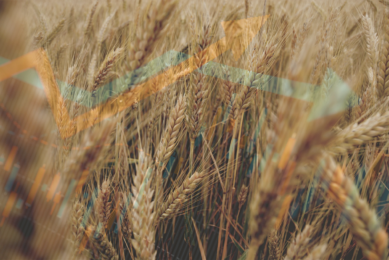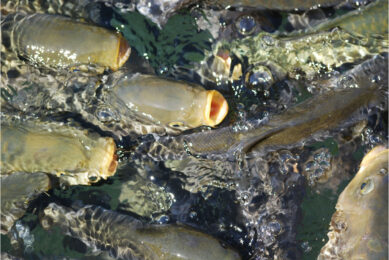Soybean checkoff capitalizing on growing aquaculture markets

For soybean farmers, the US poultry and livestock industries represent their number one customer. US poultry and livestock consume nearly 98% of the U.S. soybean meal used in the country, but more and more soybean meal finds its way into aquaculture.
Soybean meal takes to the lakes, rivers and seas, as well as the barns and feedlots, as the prominent poultry and livestock feed grows in popularity in fish and shrimp diets as well.
The growing demand for commercially raised aquatic products presents significant opportunity for soy-based aquaculture feeds for fish and shrimp species.
Currently, the greatest demand for soy use in aquaculture rests in the China freshwater sector, which produces 63% of global aquaculture. Estimates show the Chinese aquaculture industry uses up to 6.5 million tonnes.
"The amount of soybean meal used for aquaculture in China exceeds the soybean production of Indiana," says Joe Meyer, United Soybean Board (USB) director and a soybean farmer from Williamsburg, Ind.
"The soybean checkoff continues to work to expand the aquaculture industries in other areas, such as Southeast Asia, Central America and the Middle East."
The soybean checkoff is supported entirely by soybean farmers with individual contributions of 0.5% of the market price per bushel sold each season. The efforts of the checkoff are directed by the United Soybean Board.
Aquaculture technologies
Soy-based feeds and production technologies developed in China and through collaborative research with the soybean checkoff are currently being used in 18 countries. Some of the aquaculture technologies developed in China include:
- A pond production system that produces a single fed species, together in the same pond ecosystem as another species that lives off other organic matter in the ecosystem for maximum efficiency.
- A cage technology that is sustainable and environmentally friendly for lakes and rivers.
- An ocean cage technology that is storm resistant and allows fish to be raised in cleaner offshore environments.
"The whole fish-feeding industry is in its infancy, and we’re still determining soy inclusion levels in diets and market opportunities for many species," says Meyer.
Increasing seafood demand
"Global demand for seafood continues to increase, with the United States consuming about $15 billion worth of seafood annually. At the same time, the wild catch of seafood is levelling off or decreasing, so there is a large opportunity for aquaculture."
The challenges of a reduced wild catch affect the cost and supply of fish meal for aquatic diets.
Increased costs of fish meal, as well as other plant ingredients, like canola meal and cotton meal, mean more soy products will be used in aquaculture this year.
Soy protein concentrate
The increased use of soy protein concentrate (SPC), a product with higher protein levels than soybean meal, will allow even more soy to be fed to fish and shrimp, as more fish and shrimp producers become aware of the advantages of using SPC to partially or completely replace fish meal for different fish species and shrimp.
Estimated SPC production for 2010 will be about 30,000 tons, according to the US Soybean Export Council, which carries out checkoff-funded aquaculture promotion efforts abroad.
"Protein levels for fish nutrition are much higher than what we would expect for poultry and livestock, so SPC allows us to develop aquafeeds that meet the nutrient requirements of a number of species of fish and shrimp that have a limited tolerance for soybean meal," says Meyer.
"The work on soy in aquaculture has only begun," says Meyer. "We expect to see continued expansion of the aquaculture industry in Southeast Asia, Vietnam, Thailand, India and other markets."
Source: United Soybean Board.











